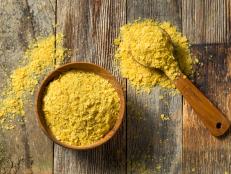How to Cook with Minari
The peppery plant can be used in a range of Korean dishes.

Alexis Pisciotta
Minari is the Korean name for water dropwort, water parsley, water celery or pennywort. This plant, native to East Asia, is widely consumed in South Korea. Minari is a peppery, herbaceous and bitter plant with large leaves and hollow, long (16 to 20 inches) stems. The plant is usually bright green, though some varieties have purple-tipped stems. Its leaves and stems are edible and fragrant, and like most soft herbs (think parsley and cilantro), minari’s flavor is concentrated in its stems.
How to Shop for Minari
The growing seasons for minari are short. Its peak seasonality is in the spring and the plant gets harvested starting in early February. The best time to get minari is in March and April, as earlier harvests tend to yield shorter stems, while later harvests in May yield more fibrous, stringy ones.
When shopping, be sure to get your hands on fresh bundles with bright green leaves and stems; they should be green throughout.
Wash and dry as you would other herbs, and store by wrapping in paper towels or newspaper. Then place in a plastic bag. Keep in refrigerator until ready to use.
How to Cook with Minari
Minari, rather than being treated as an herb, is used more like a vegetable in Korean cuisine. Its distinct flavor and grassy notes pair well with almost anything. Minari is typically added to spicy fish soups and stews – its leafy tops are added as a garnish while its stems are cooked into the dish. Most restaurants that specialize in agui or aguijjim (anglerfish) steam the fish with minari and soybean sprouts, then toss in a spicy gochujang-based sauce.
Minari also pairs well with fatty, heavy proteins like pork belly. It can be eaten raw, or cooked down on a grill pan next to the meat – as it gets tossed in the pork juices and fat – for ssam (wrapped lettuce or greens).
The vegetable can be also mixed into wheat flour batter to make jeons (pancakes), with or without other vegetables.
It’s also widely used in napa cabbage kimchi, as it holds well during fermentation and imparts fresh, herbaceous notes to the cabbage. Minari can also be made into a kimchi on its own. Complementary ingredients for this type of kimchi include cucumbers, chives and scallions (along with typical kimchi ingredients like fish sauce, gochugaru and garlic).
Minari holds well on its own as a namul (vegetable side) banchan (side dish). Just quick blanch and shock the herb, then toss in sesame oil, salt and garlic.
Related Content:































































